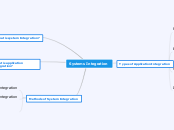von Lau Yincheng Vor 8 Jahren
432
Emulsifier
Emulsifiers play a crucial role in various applications by stabilizing mixtures that would otherwise separate. They are used in food products such as noodles, pasta, ice cream, chocolate, cakes, cocoa powder, margarine, shortening, and bread to enhance specific properties like water absorption, elasticity, foam stabilization, and aeration.









